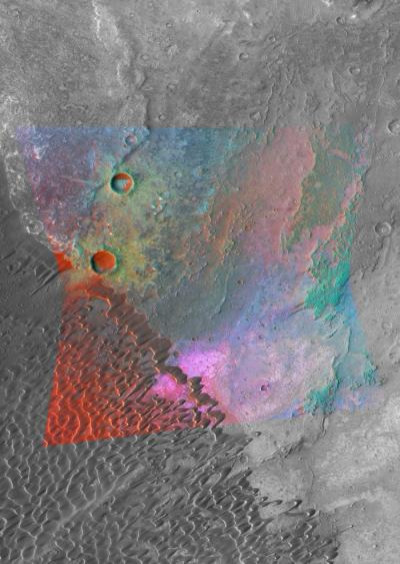Granite Found On Mars? ‘Compelling’ Evidence Suggests Planet Is Geologically Complex [PHOTOS]

A mineral commonly found on Earth may have been recently discovered on Mars.
Granite, scientists suggest, could have formed on the Red Planet after large amounts of feldspar were discovered in an ancient volcano. The findings, recently published in the journal Nature Geoscience, suggest that there’s a more complex reason explaining how granite formed on Mars.
"We're providing the most compelling evidence to date that Mars has granitic rocks," James Wray, an assistant professor in the School of Earth and Atmospheric Sciences at the Georgia Institute of Technology and the study’s lead author, said in a statement.
While Mars is known to be covered in dark-colored volcanic rocks, called basalt, the Mars Curiosity rover picked up soil samples that were similar to granite -- a very hard, granular, crystalline, igneous rock found on Earth. Using remote sensing techniques with infrared spectroscopy, a team of scientists were able to study a volcano on Mars where rich deposits of feldspar, a kind of granite, were found.

Scientists speculate that while the magna cools from the subsurface, fractionation takes place where the melt separates from the dense crystals. The process is repeated over millions of years until granite is formed. A computer simulation of the volcano over extended periods of time showed how this is a possible explanation.
"We think some of the volcanoes on Mars were sporadically active for billions of years," Wray said in a statement. "It seems plausible that in a volcano you could get enough iterations of that reprocessing that you could form something like granite."
The granite found differs from what's on Earth. "These compositions are roughly similar to those comprising the plutons at Yosemite or erupting magmas at Mount St. Helens, and are dramatically different than the basalts that dominate the rest of the planet," Josef Dufek, an associate professor in the School of Earth and Atmospheric Sciences at Georgia Tech, said.
This isn’t the first study aimed at explaining the feldspar found on Mars. Published in the same edition of Nature Geoscience, a team of scientists say the rocks are like anorthosite, which is commonly found on the moon.
Regardless of what the rocks are, the fact that its composition differs from basalt suggests Mars is more geologically diverse than previously thought.
"We talk about water on Mars all the time, but the history of volcanism on Mars is another thing that we'd like to try to understand," Wray said. "What kinds of rocks have been forming over the planet's history? We thought that it was a pretty easy answer, but we're now joining the emerging chorus saying things may be a little bit more diverse on Mars, as they are on Earth."
© Copyright IBTimes 2024. All rights reserved.




















